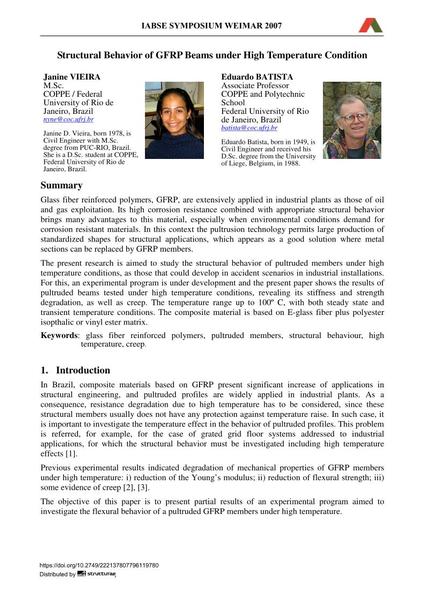Structural behaviour of GFRP beams under high temperature condition

|
|
|||||||||||
Détails bibliographiques
| Auteur(s): |
Janine Vieira
Eduardo Batista |
||||
|---|---|---|---|---|---|
| Médium: | papier de conférence | ||||
| Langue(s): | anglais | ||||
| Conférence: | IABSE Symposium: Improving Infrastructure Worldwide, Weimar, Germany, 19-21 September 2007 | ||||
| Publié dans: | IABSE Symposium Weimar 2007 | ||||
|
|||||
| Page(s): | 78-79 | ||||
| Nombre total de pages (du PDF): | 8 | ||||
| Année: | 2007 | ||||
| DOI: | 10.2749/222137807796119780 | ||||
| Abstrait: |
Glass fiber reinforced polymers, GFRP, are extensively applied in industrial plants as those of oil and gas exploitation. Its high corrosion resistance combined with appropriate structural behavior brings many advantages to this material, especially when environmental conditions demand for corrosion resistant materials. In this context the pultrusion technology permits large production of standardized shapes for structural applications, which appears as a good solution where metal sections can be replaced by GFRP members. The present research is aimed to study the structural behavior of pultruded members under high temperature conditions, as those that could develop in accident scenarios in industrial installations. For this, an experimental program is under development and the present paper shows the results of pultruded beams tested under high temperature conditions, revealing its stiffness and strength degradation, as well as creep. The temperature range up to 100º C, with both steady state and transient temperature conditions. The composite material is based on E-glass fiber plus polyester isopthalic or vinyl ester matrix. |
||||
